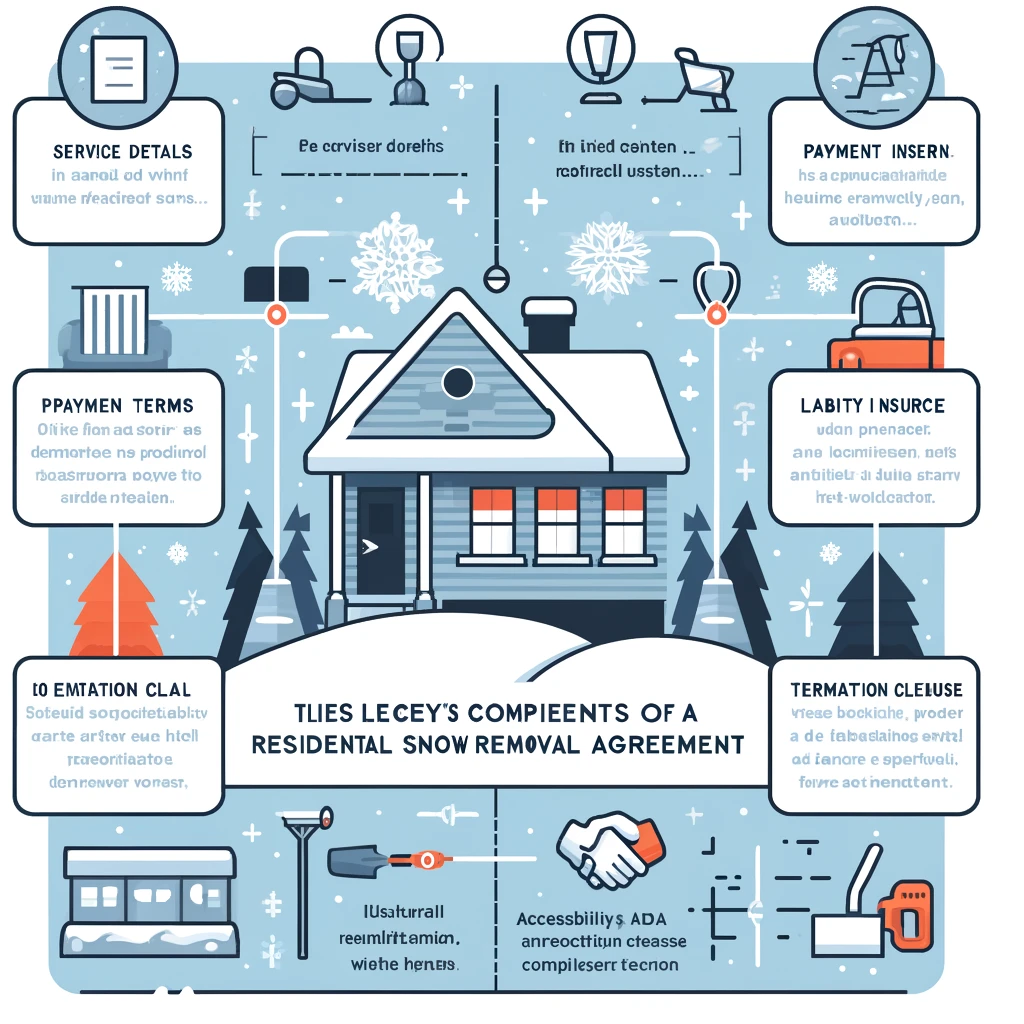The Ultimate Guide to Residential Snow Removal Agreements
As winter approaches, homeowners in snow-prone areas begin the task of ensuring their driveways, walkways, and other residential areas remain clear of snow and ice. A residential snow removal agreement is a critical tool for both homeowners and snow removal service providers, ensuring clarity, legality, and effectiveness in the face of harsh winter conditions. This comprehensive guide will explore what a residential snow removal agreement encompasses, the benefits of having one, essential components to include, and legal considerations to keep in mind, all while incorporating authoritative resources to enhance credibility and reliability.

Understanding Residential Snow Removal Agreements
Definition and Importance
A residential snow removal agreement is a legally binding contract between a homeowner and a snow removal service provider. It outlines the terms and conditions under which snow removal will be conducted, including service details, payment terms, and liability issues. These agreements are essential for ensuring that expectations are clear and responsibilities are understood, thereby preventing disputes and misunderstandings.
For a deeper understanding of contract law as it pertains to such agreements, a visit to the Cornell Law School's Legal Information Institute website is recommended here.
Benefits for Homeowners and Service Providers
Homeowners: They gain peace of mind knowing that their property will be taken care of throughout the winter season, reducing the risks associated with snow and ice accumulation.
Service Providers: They benefit from having a clear schedule and guaranteed payment for their services, allowing for more efficient planning and resource allocation.
Key Components of a Snow Removal Agreement
Service Details
This section should specify the areas to be cleared (e.g., driveways, sidewalks), the depth of snow triggering service, and the time frame for clearing snow after a snowfall. Inclusion of a service area map can be helpful for avoiding any confusion.
Payment Terms
Clearly outline the payment structure, whether it’s a flat season fee, per visit charge, or based on the amount of snow removed. Also, include payment deadlines and any late fees.
Liability and Insurance
Discuss liability for damages during snow removal and ensure the service provider has adequate insurance coverage. The U.S. Small Business Administration provides guidance on choosing the right insurance for your business, accessible here.
Termination Clause
Include conditions under which the agreement can be terminated by either party, ensuring there's a clear exit strategy if the relationship doesn't work out as planned.
Legal Considerations
Local Laws and Regulations
Be aware of local laws and ordinances regarding snow removal. Some municipalities may have specific requirements or restrictions that could affect your agreement.
Accessibility and ADA Compliance
For residential communities, it’s important to consider the Americans with Disabilities Act (ADA) and ensure that snow removal practices do not impede accessible pathways. The ADA National Network provides resources on ADA standards here.
Environmental Considerations
Discuss the use of de-icing chemicals and methods to minimize environmental impact. The Environmental Protection Agency (EPA) offers guidelines on environmentally friendly deicing practices here.
Choosing a Reliable Snow Removal Service
Research and Recommendations
Start with a search for local providers with good reviews and ask for recommendations from neighbors or local community groups.
Licenses and Insurance Verification
Ensure the service provider is licensed to operate in your area and carries liability insurance and workers' compensation insurance, if applicable.
Contract Review
Before signing, thoroughly review the agreement or have it reviewed by a legal professional to ensure it meets your needs and complies with local laws.

Create & Review Your Contracts 10x Quality and Ease
Lawyer-level AI handles all your contract needs, with real lawyers providing safeguarding support

Conclusion
A well-crafted residential snow removal agreement is essential for ensuring safety, clarity, and peace of mind during the winter months. By understanding the key components, legal considerations, and the process for selecting a reliable service provider, homeowners can effectively navigate the challenges of snow and ice removal. For further information and resources on creating and managing such agreements, homeowners and service providers alike are encouraged to consult with legal professionals and utilize reputable online resources.

